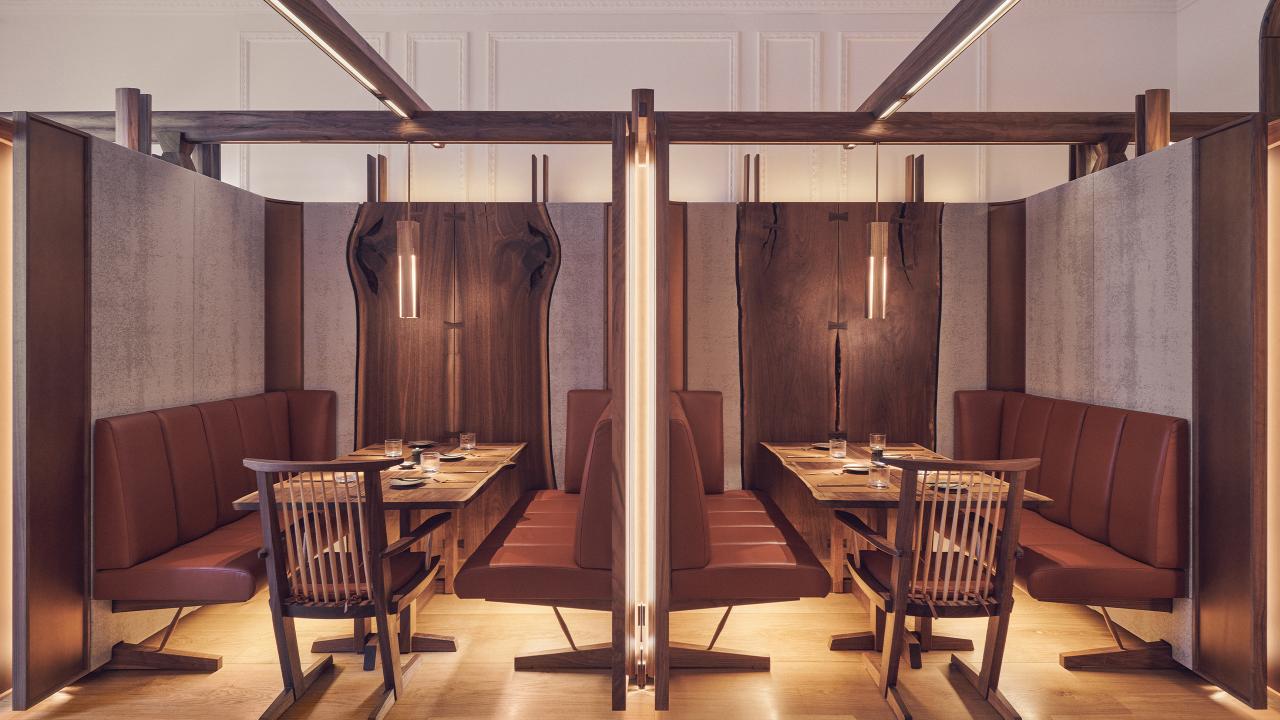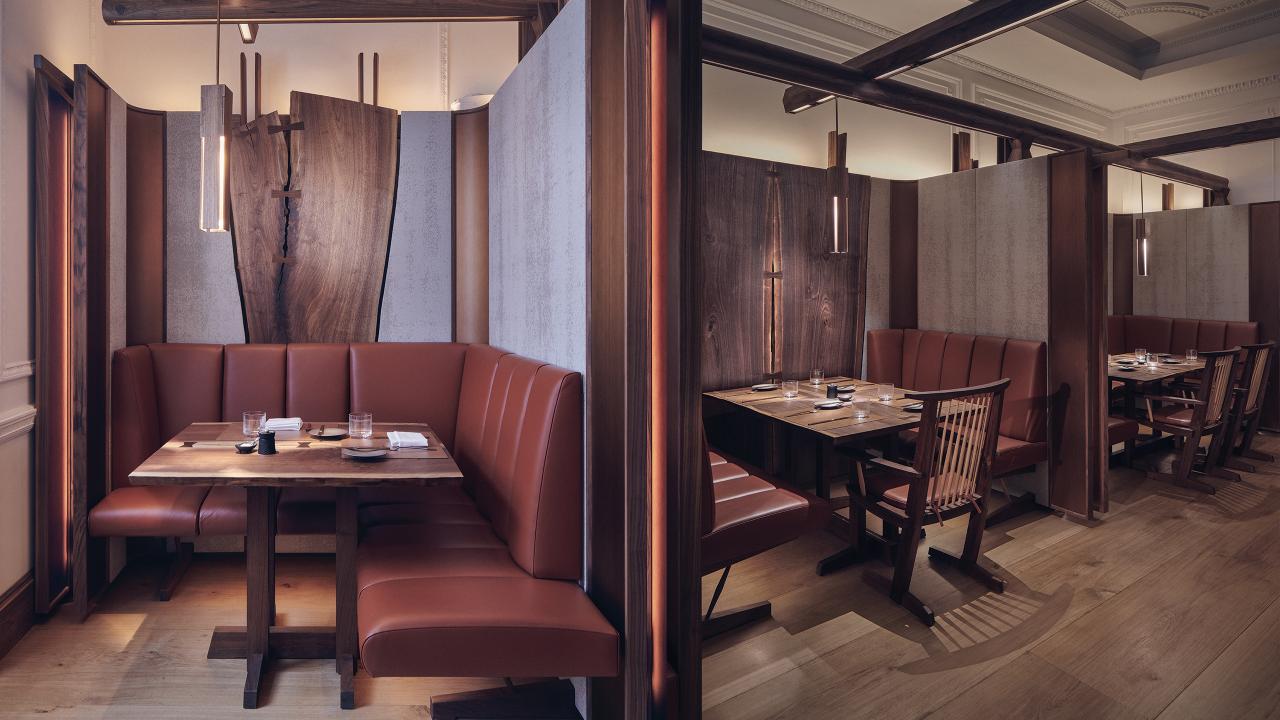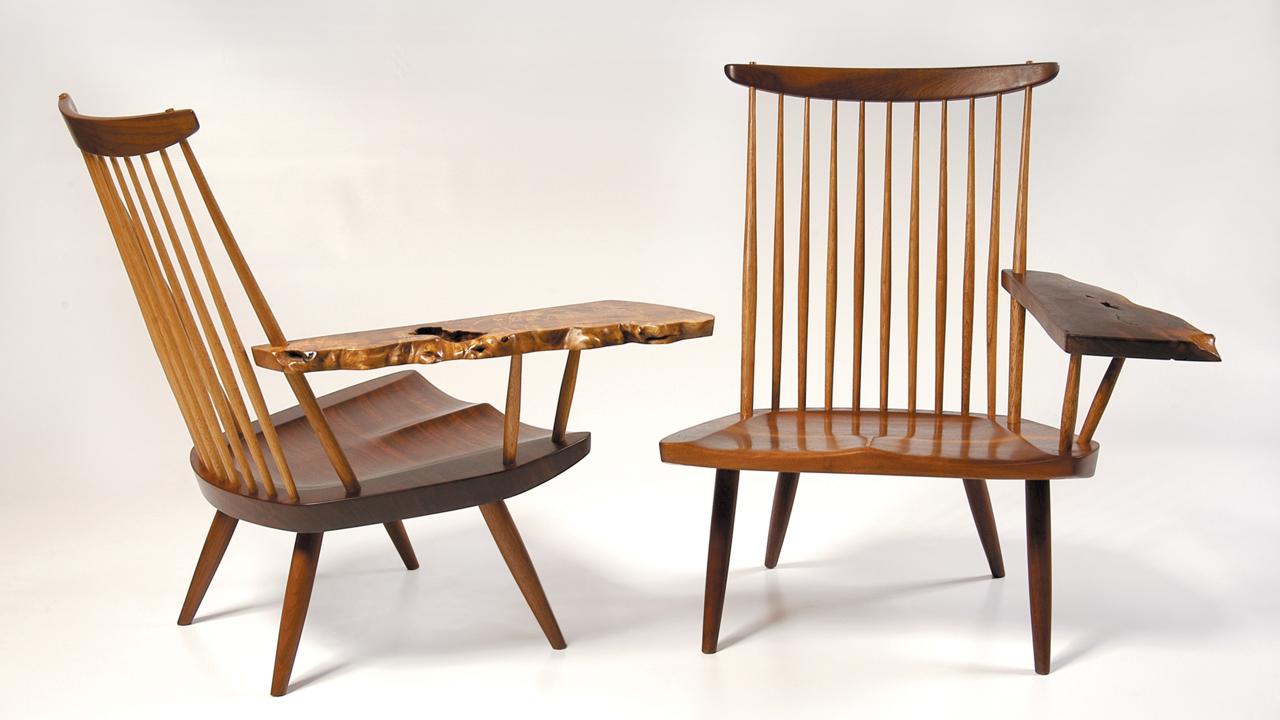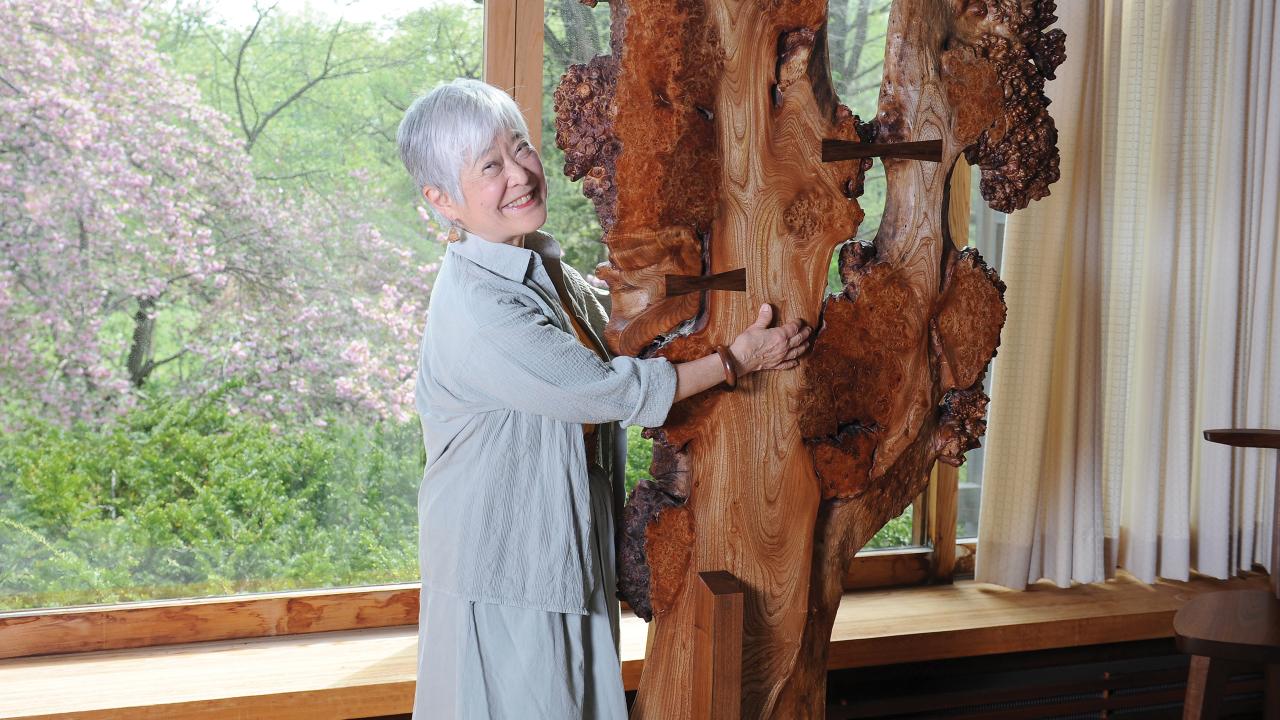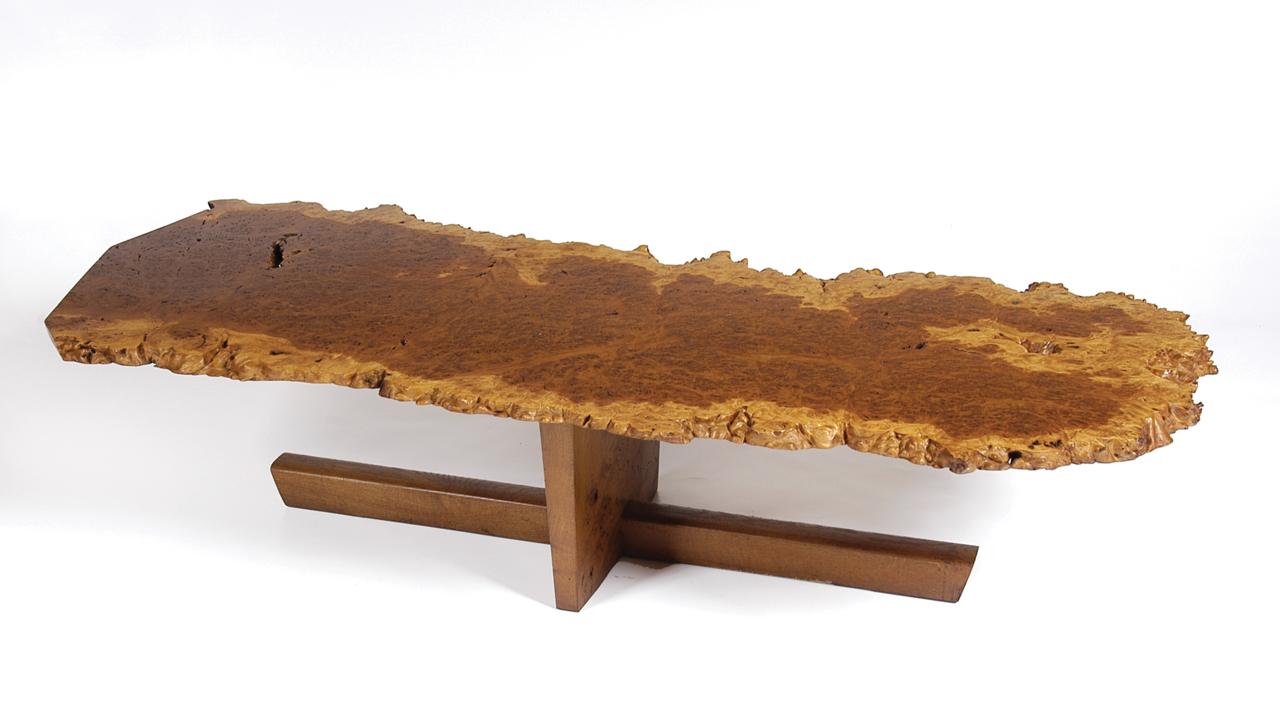Nakashima Woodworkers creates “antiques for the future” in American black walnut
Pennsylvania-based Nakashima Woodworkers focuses on material and craftmanship by creating timeless furniture pieces from sustainably harvested hardwoods, particularly American black walnut, made to be aesthetically pleasing and utilitarian at the same time.
Founded in 1945 by the late Japanese American George Nakashima, the studio works only with solid wood and with an immense respect for the material - George believed that natural materials, such as wood, should be “studied, understood and respected”.
Rather than keeping in line with modern architecture and design of the time, George Nakashima sought to go back to a simpler, more traditional way of woodworking, one that focuses on the material and the craftsman, and the relationship between the two. He considered wood as something that “lives and breathes”. He also used techniques uncommon in the States at the time, to celebrate the wood with all its “flaws”.
“I think the idea of using “flitch cuts” sawn through-and-through may have been one of my father’s most important contributions to the American hardwood lumber industry, as well as to the furniture-making industry in the United States, although they used that technique for centuries in Japan”, says daughter Mira Nakashima, who runs the workshop today.
“Although most makers at the time would either stain or cut out the lighter sapwood streaks, my father thought they were interesting just as they were, and incorporated them into his designs, giving a new meaning to the term “free-form”. He also thought that the so-called “imperfections” such as cracks, knots, bark inclusions, were interesting, and would often inlay East Indian Rosewood butterfly ties over them to stabilize the wood. In the beginning, he said people did not understand what he was doing, but as time went on would pay extra for those cracks, knots and “imperfections” especially if they needed butterflies,” she adds.
The workshop works mainly with American black walnut, a hardwood that is abundant in the Pennsylvanian forests.
“My father began working with black walnut in the 1940s, as it was plentiful in our area (and still is!) and, when seasoned and oiled properly, had a beautiful, rich, dark brown color accented by different shades of lighter, cream-colored sapwood edges”, Mira says when asked about the choice of walnut in their designs.
When The Connaught in London decided to redesign their legendary Grill Room, architect John Heah, in charge of the interiors, contacted Mira Nakashima. The impressive redesign of the dining room finished earlier this year and features several of Nakashima’s pieces, such as the Frenchman’s Cove tables, the Conoid chairs and large walnut panels with George’s signature butterfly joints holding the boards together. Mira says the architect and owner of The Connaught originally envisioned relatively straight edges on the walnut panels, but that they agreed to make some of the panels more free-form.
“Seated in those booths with walnut panels on one side and book-matched walnut table-tops, with place-mats, ceramic, glass and tableware all carefully selected to harmonize, it almost feels as if you are on some kind of elegant picnic in a magical forest when you are there,” says Mira.
Photos courtesy of Nakashima Woodworkers and The Connaught.
https://nakashimawoodworkers.com/
https://www.the-connaught.co.uk/restaurants-bars/the-connaught-grill/
